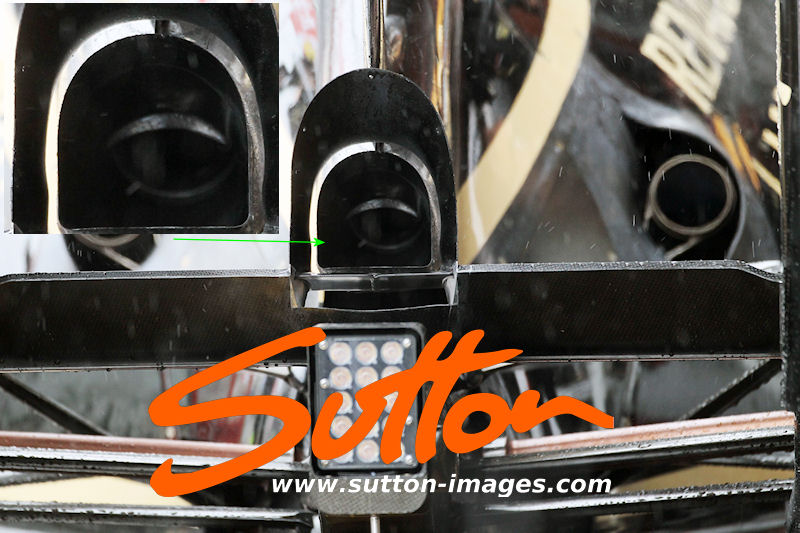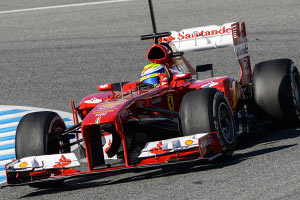1. I'll get back to you on that one. Until I do, maybe ponder the following in general terms: wheel wake, nose height, and turning vanes under the nose.
2. I think a better way to put that would be to say that the inlet will choke when air pressure within the cavity is equal to or greater than the ambient pressure around the cavity. You could go 1,000,000 MPH, but as long as the system vents the equivalent of 1,000,001 MPH "worth of pressure" along the way - I don't know how else to put it - the system will continue to draw in air. This is why the vent, which is yet to be seen, is so important.
3. Agreed. The vent does indeed have to exit into low pressure. Have I mentioned the low-pressure oasis at the back of the F138?
By the way, what do we think of the idea that duct work from the inlet to, I dunno, a low-pressure oasis in the back of the F138 is accommodated by the chassis...

...right there? (The indentations, not the holes.)
It's admittedly rank speculation, b̶u̶t̶ ̶a̶ ̶v̶e̶r̶y̶ ̶s̶i̶m̶i̶l̶a̶r̶ ̶s̶o̶l̶u̶t̶i̶o̶n̶ ̶w̶o̶r̶k̶e̶d̶ ̶f̶o̶r̶ ̶M̶e̶r̶c̶e̶d̶e̶s̶ ̶l̶a̶s̶t̶ ̶y̶e̶a̶r̶.̶ I'm kidding. We all know
nothing really worked for Mercedes last year.
How about a specialized little "diffuser," though?
 Constant lower pressure
Constant lower pressure
4. Fair enough.
5. Yes, some numbers would be fantastic. Think Ferrari's willing to give us a loaner on some data?
6. I'm not sure why we're still so singularly focused on shedding the boundary layer. I'll accept the blame for that, though, because of my earlier poor wording.
The whole point of this exercise is to prevent the boundary layer from separating due the adverse pressure gradient after the Venturi. If the inlet reduces
any pressure from
any source in that area, the boundary layer will benefit from the weaker, or even altogether neutralized, adverse pressure gradient that would normally occupy that spot. That means it won't separate to play hell with the car's aerodynamics downstream.







